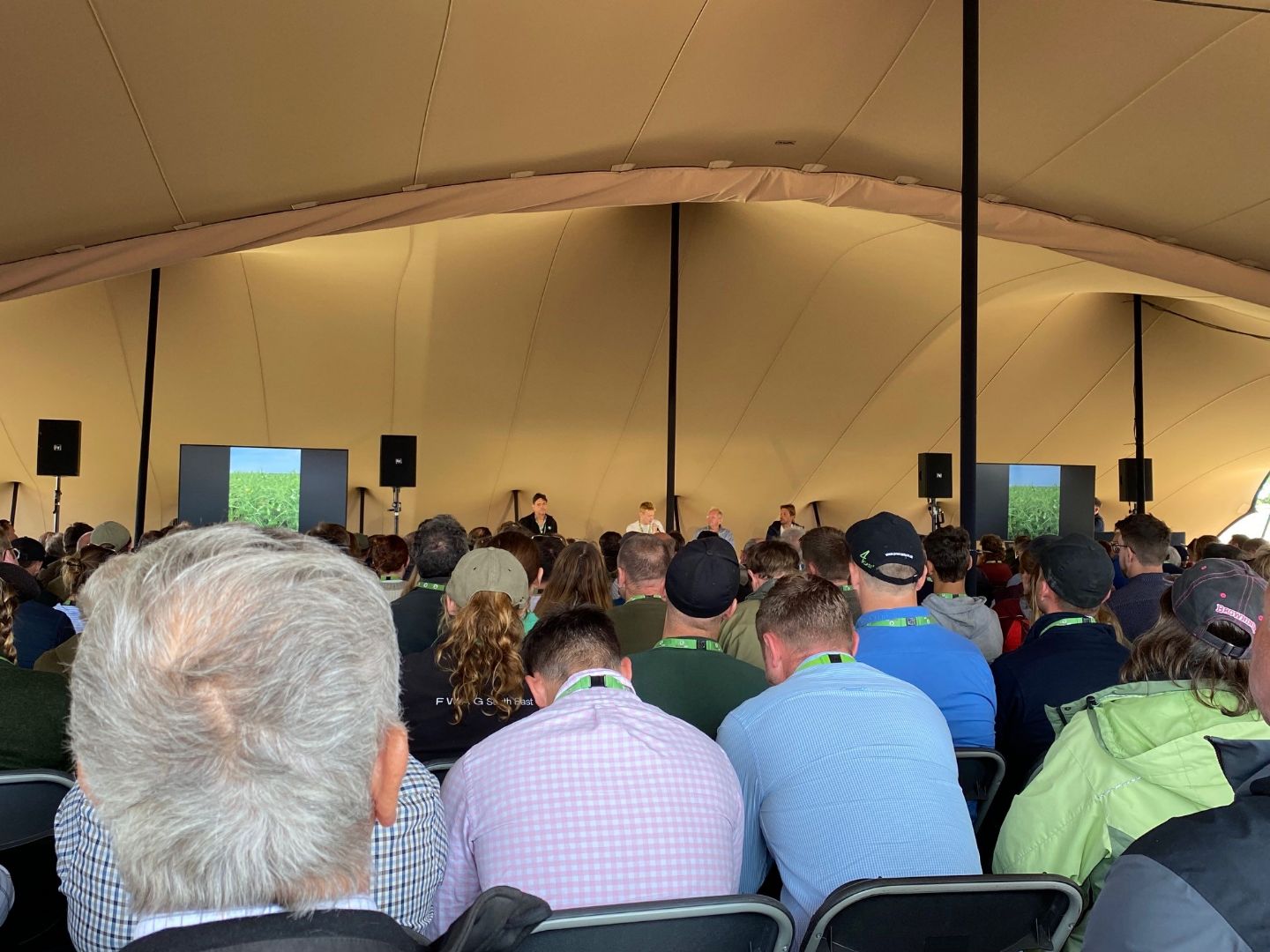
Intercropping involves growing two or more crops together, and is based on the understanding that plant diversity drives both soil diversity and soil health. Intercropping can:
- Improve the soil’s resilience to stresses
- Reduce the need for synthetic fertilisers
- Increase biodiversity and yields
In the ‘Intercropping – Practical Lessons’ session at Groundswell 2023, Ben Adams, Andy Cato and David White shared their practical tips and insights on how to successfully grow multiple crops together, from drilling through to marketing.
- Growing two crops together in an intercropping system can improve margin and it’s margins that make the money.
David White shared the results from a tramlines trial which he conducted over two consecutive years. He found that the land equivalent ratio was 1.32:1, when comparing the bicrop against the monocrop, in both years. With bicropping they were better off in tonnes produced, with the margin in favour of the bicrop working out at £253 per hectare.
The direction of future policy is also set to increase the profitability of intercropping systems. With SFI payments for companion cropping at £55 per hectare, payments for using no insecticides at £45 per hectare and future payments coming out next year for no-till and direct drilling (£50 to £125 per hectare) and for use of precision approaches (£10 - £50 per hectare), intercropping starts to look like a viable option.
- Drilling depth is not as important as you might think, keep it simple.
During the session, the speakers shared their approaches to sowing multiple crops together, and whether adhering to the recommended drilling depth is required for crop establishment.
Ben Adams shared that with his seven different crops, the largest being beans and the smallest mustard, all have gone in at an inch and a half depth down the same row, and all have established. He said that drilling depth is not something to worry about, but to consider pigeon control measures to protect beans.
David White has tried several methods. In the first year of trying intercropping, he mixed the two seed types together (oats and beans) and put them in together at an inch and a half depth. The second year he used a tyne drill for the winter beans and oversowed the oats using an Avatar disc drill. In both cases everything established well. He is now using the Avatar with alternate rows, allowing the beans to be drilled deeper.
- It’s worth using variety blends.
Intercropping is about adding more diversity into the system, but mainstream varieties are bred for monocropping. Use of variety blends can help add to the species diversity in an intercropping system. Ben Adams shared that 70% of his milling wheats are variety blends, which are chosen based on maturity dates and disease resistance.
Similarly, David White has been using a variety blend of milling wheat for six years. He uses home-saved seed which is tested after each harvest to check it’s clean and can go back into the ground. “I like to think that over a period of time it adapts itself to my soil type, growing conditions and farming style. Growing blends isn’t a new thing and I think there’s a lot to be said for having some diversity within the crop and getting away from total monocrops,” he said.
- Crops grown together come to maturity together.
When asked how to manage the harvest of two or more crops grown together if they are ripening at different time, it became clear that none of the speakers had experienced significant issues with this. It turns out that when grown in an intercropping system, plants tend to come to maturity together. This is because as a plant comes to maturity it releases a plant hormone called ethylene, which triggers the plants around it to go into the same process. This means beans tend to ripen early in oats, making it possible to harvest them together.
- Consider how to set up the combine.
The combine settings need to reflect the extremes of the crops. The concave should be set to suit the largest crop, while the fan set to suit the lowest crop. It’s also important to avoid smashing the pulse element up and contaminating the cereal.
In summary, intercropping requires a different approach to conventional cropping, which involves a certain level of going against the grain, as the current system is set up to process and market crops grown in a monoculture. But there are benefits to be had by adding plant diversity and allowing nature to do its thing, which also align with the current policy direction. With some tweaks to management approach and a good separator post-harvest, there’s financial gains to be made via improved margins with intercropping.




